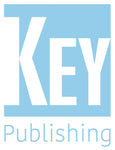
British Support Aircraft WW2
Original price
£5.00
-
Original price
£5.00
Original price
£5.00
£5.00
-
£5.00
Current price
£5.00
SKU BKIS-AA-010
THIS EDITION OF Aeroplane Collectors’ Archive illustrates British-built aircraft which have provided support to the main operational types covered in previous Bomber and Fighter editions.
The title proved difficult because of the variety of types covered and in this respect we must point out that the Beaufort is included here although it was an operational aircraft but was omitted from the Bombers volume. Since there are quite a few support aircraft it was necessary to split them between two editions and the second edition will cover singleengine types ranging from Tiger Moths to Magisters, Henleys, Lysanders etc. Where possible we provide cutaway drawings by Aeroplane, Flight and other artists, but in some cases we have only been able to obtain other style cutaways such as those for the Manchester, Botha and Beaufort included here.
PHOTOGRAPHERS AND ARTISTS
As before, we bring you some material from Aeroplane by the former staff including Charles Sims, Alf Long and Maurice Rowe who began their photographic work with First World War vintage equipment, learning to make up chemicals, dry prints on rotary glazing drums and operate a large camera on rails. Becoming a photographer for Temple Press was a do-it-yourself operation and if a large number of images were required slides had to be reloaded, so an overnight assignment required a wardrobe in the bedroom ensuring the door was tightly closed! Photographers these days don’t know how lucky they are with digital equipment – but is the quality as good?
CUTAWAY ARTWORK
Detailed examination of the cutaway drawings included in these pages reveals the amount of work involved. James Clark began producing cutaways in the mid 1930s for Aeroplane and continued for 30 years, his rival with Flight was Max Millar. At first these drawings were small and relatively uncomplicated but as aircraft and engine design developed the cutaways became even more detailed.
The title proved difficult because of the variety of types covered and in this respect we must point out that the Beaufort is included here although it was an operational aircraft but was omitted from the Bombers volume. Since there are quite a few support aircraft it was necessary to split them between two editions and the second edition will cover singleengine types ranging from Tiger Moths to Magisters, Henleys, Lysanders etc. Where possible we provide cutaway drawings by Aeroplane, Flight and other artists, but in some cases we have only been able to obtain other style cutaways such as those for the Manchester, Botha and Beaufort included here.
PHOTOGRAPHERS AND ARTISTS
As before, we bring you some material from Aeroplane by the former staff including Charles Sims, Alf Long and Maurice Rowe who began their photographic work with First World War vintage equipment, learning to make up chemicals, dry prints on rotary glazing drums and operate a large camera on rails. Becoming a photographer for Temple Press was a do-it-yourself operation and if a large number of images were required slides had to be reloaded, so an overnight assignment required a wardrobe in the bedroom ensuring the door was tightly closed! Photographers these days don’t know how lucky they are with digital equipment – but is the quality as good?
CUTAWAY ARTWORK
Detailed examination of the cutaway drawings included in these pages reveals the amount of work involved. James Clark began producing cutaways in the mid 1930s for Aeroplane and continued for 30 years, his rival with Flight was Max Millar. At first these drawings were small and relatively uncomplicated but as aircraft and engine design developed the cutaways became even more detailed.

